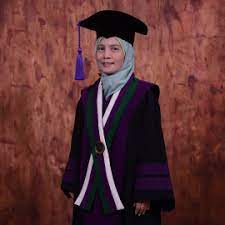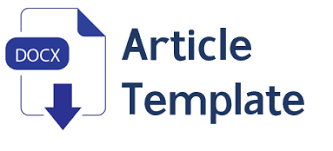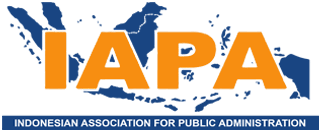INNOVATOR SOCIAL MEDIA AND THE EMERGENCE OF A TOURISM DESTINATION
DOI:
https://doi.org/10.30997/jsh.v15i1.12796Keywords:
assets, awareness, innovator, new tours, social mediaAbstract
Many regions in Indonesia have tourism assets that take work to develop into new tourist destinations. Seeking any pattern in developing a new tourism destination applicable to Indonesia with excellent tourism potential, this study becomes essential. It analyses how Gili Ketapang, a village in Probolinggo, East Java, became a new tourism destination. The researchers used a qualitative descriptive-analytical method. The data collection applies observation, documentation, and interviews with twelve informants involved in a snowball method. The primary analysis is an interactive analytical model. This research found that Gili Ketapang’s growth into a tourism destination started with an initiative from an innovator aware of the tourist assets. The innovator had the confidence and courage to package and offer the tourism assets via social media. Once the business was successful, it encouraged other local people to get involved, and eventually, the region became a new tourist destination. Creating a tourist destination does not require big investors but an innovator. This research provides recommendations for building a tourist destination to portray their tourism assets vividly, build big dreams, design tourism packages, and broadcast them to the public through effective media communications.
References
Andrianto, T., & Sugiama, G. (2016). The analysis of potential 4A’s tourism component in the Selasari Rural Tourism, Pangandaran, West Java. https://doi.org/10.2991/atf-16.2016.21
Dermawan, D. A., & Anom, I. P. (2019). Sistem Pengelolaan Daya Tarik Wisata Pulau Gili Ketapang Sebagai Aset Desa Gili Ketapang, Kecamatan Sumber Asih, Kabupaten Probolinggo. JURNAL DESTINASI PARIWISATA, 7(2), 382–389. https://doi.org/10.24843/jdepar.2019.v07.i02.p24
Fatanti, M. N., & Suyadnya, I. W. (2015). Beyond user gaze: how instagram creates tourism destination brand? In K. Pirzada, D. Wickramasinghe, G. A. Moens, & A. F. A. Hamid (Eds.), Procedia-Social and Behavioral Sciences (1089–1095). Elsevier. https://doi.org/10.1016/j.sbspro.2015.11.145
Febriani, N. F., Hidayatullah, H., & Kusuma, L. S. T. (2021). Optimalisasi Program Kebijakan Pemerintah dalam Meningkatkan Kreatifitas Masyarakat dalam Pengembangan Wisata di Kabupaten Lombok Tengah. Journal of Government and Politics (JGOP), 1(2), 67–85. https://doi.org/10.31764/jgop.v1i2.3958
Fernandez, G., & Ahmed, I. (2019). “Build back better” approach to disaster recovery: Research trends since 2006. Progress in Disaster Science, 1, 1–5. https://doi.org/10.1016/j.pdisas.2019.100003
Hernawan, D., & Pratidina, G. (2015). Model Implementasi Kebijakan Pengembangan Pariwisata dalam Meningkatkan Destinasi Pariwisata di Kabupaten BogorNo Title. Jurnal Sosial Humaniora, 6(2), 68–77.
Ismail, T., & Rohman, F. (2019). The role of attraction, accessibility, amenities, and ancillary on visitor satisfaction and visitor attitudinal loyalty of Gili Ketapang Beach. Jurnal Manajemen Teori Dan Terapan | Journal of Theory and Applied Management, 2(2), 149–165. https://doi.org/10.20473/jmtt.v12i2.14423
Jaya, P. H. I. (2012). Trickle Down Effect: Strategi Alternatif dalam Pengembangan Masyarakat. Welfare: Jurnal Ilmu Kesejahteraan Sosial, 1(1), 69–85. https://www.google.com/url?sa=t&rct=j&q=&esrc=s&source=web&cd=&ved=2ahUKEwiXtZmVhfWEAxU76KACHWF1DLcQFnoECBUQAQ&url=https%3A%2F%2Fdigilib.uin-suka.ac.id%2Fid%2Fdocument%2F107026&usg=AOvVaw2K2tzIShQrZLXXr_Cjrdhu&opi=89978449
Jaya, P. H. I. (2018). Trickle Down Efeck dan Perubahan Wajah Masjid di Yogyakarta. Inferensi: Jurnal Penelitian Sosial Keagamaan, 12(1), 1–24. https://doi.org/doi.org/10.18326/infsl3.v12i1.1-24
Jaya, P. H. I. (2020). Media Sosial, Komunikasi Pembangunan, dan Munculnya Kelompok-kelompok Berdaya. Jurnal Kajian Komunikasi, 8(2), 166–178. https://doi.org/10.24198/jkk.v8i2.16469
Jaya, P. H. I., & Izudin, A. (2022). The role of religious belief in sustainable community-based tourism during post-disaster recovery. Tourism Culture & Communication.
Jonsa, A., Hasyim, E., Karim, A., & Safangawan, N. (2019). Peran Pemerintah Daerah Kabupaten Simeulue dalam Pemberdayaan Potensi Pariwisata. Public Administration Journal of Research, 1(4), 318–334. https://doi.org/10.33005/paj.v1i4.27
Kartika, T., Afriza, L., & Fajri, K. (2019). Pemberdayaan Masyarakat di Desa Wisata Cibuntu Kabupaten Kuningan Provinsi Jawa Barat. Journal of Indonesian Tourism, Hospitality and Recreation, 2(1), 11–24. https://doi.org/10.17509/jithor.v2i1.16427
Kemenparekraf.go.id. (2022). Jumlah Desa Wisata. Kementerian Pariwisata Dan Ekonomi Kreatif. https://jadesta.kemenparekraf.go.id/peta
Kušen, E. (2016). Tourism attraction system. In Evolution of Destination Planning and Strategy: The Rise of Tourism in Croatia (pp. 1–302). Palgrave Macmillan. https://doi.org/10.1007/978-3-319-42246-6_7
Lew. (2002). Attraction. In Encyclopedia of tourism (35–37). Routledge. https://doi.org/10.1002/jtr.344
Miles, M. B., Huberman, A. M., & Saldana, J. (2014). Qualitative Data Analysis: A Methods Sourcebook. Fourth Edition. In The SAGE Handbook of Applied Social Research Methods. SAGE Publications.
Poli, M., Pardini, S., Passarelli, I., Citti, I., Cornolti, D., & Picano, E. (2015). The 4A’s improvement approach: a case study based on UNI EN ISO 9001:2008. Total Quality Management and Business Excellence, 26(11–12), 1113–1130. https://doi.org/10.1080/14783363.2014.912456
Pryambodo, D. G., Hasanudun, M., & Kusmanto, E. (2020). Analisis Spasial dan Temporal Perubahan Luas Wilayah untuk Pengembangan Wisata Bahari di Bagaian Barat Pulau Gili Ketapang Probolinggo Jawa Timur. Jurnal Segara, 16(1), 39–46. https://doi.org/10.15578/segara.v16i1.8648
Ramdani, Z. A. (2020). Peran Pemerintah Dalam Pengembangan Kawasan Ekonomi Khusus Mandalika Provinsi Nusa Tenggara Barat. Jurnal Planoearth, 5(1), 1–6. https://doi.org/10.31764/jpe.v5i1.1639
Santoso, E. B., & Yacob, B. (2018). Prioritas Pengembangan Infrastruktur pada Kawasan Ekonomi Khusus Bidang Pariwisata Tanjung Lesung di Kabupaten Pandeglang. Jurnal Penataan Ruang, 13(2), 35–39. https://doi.org/10.12962/j2716179x.v13i2.7112
Simanjuntak, F., & Sariffuddin, S. (2017). Peran Local Champion dalam Pengembangan Community Based Tourism di Desa Wisata Candirejo, Magelang. Jurnal Pengembangan Kota, 5(2), 190–199. https://doi.org/10.14710/jpk.5.2.190-199
Sinaga, N. (2022). Pemerintah Siapkan Rp 15 Triliun untuk Pengembangan Destinasi Wisata Superprioritas. Kompas.Id, 1. https://www.kompas.id/baca/nusantara/2022/12/22/pemerintah-siapkan-rp-15-triliun-untuk-pengembangan-destinasi-wisata-superprioritas
Soviah, S., Maulana, D., & Nugroho, A. (2020). Tata Kelola Pengelolaan Pariwisata di Kawasan Ekonomi Khusus Tanjung Lesung. Administratio: Jurnal Ilmiah Administrasi Publik Dan Pembangunan, 11(2), 79–90. https://doi.org/10.23960/administratio.v11i2.154
Sulastri, S. (2019). Pengaruh Pendapatan Sektor Pariwisata Terhadap Kesejahteraan Masyarakat dan Pertumbuhan Ekonomi Lampung Timur. FIDUSIA : Jurnal Keuangan Dan Perbankan, 2(2), 13–27. https://doi.org/10.24127/jf.v2i2.451
Sumerti Asih, Nyoman Sri Ratnawati, & I Wayan Wirawan. (2021). Kebijakan
Downloads
Published
How to Cite
Issue
Section
License
Copyright (c) 2024 Jurnal Sosial Humaniora

This work is licensed under a Creative Commons Attribution-ShareAlike 4.0 International License.
Authors submitting manuscripts must understand and agree to copyright the manuscript of the article was transferred to OJS Djuanda University. All rights reserved. The copyright release statement for the Journal of Social Humanities is set out in the Agreement Transfer of Copyright. This work is licensed under Creative Commons Attribution-ShareAlike (CC BY-SA) version 4.0 where Author and Readers can copy and redistribute material in any media or format , as well as mixing, modifying and building materials for any purpose, but they must provide appropriate credit (citing articles or content), provides a link to the license, and indicates when changes have been made. If you mix, modify, or develop, the materials you have to distribute your contributions are under the same license as the originals.
















